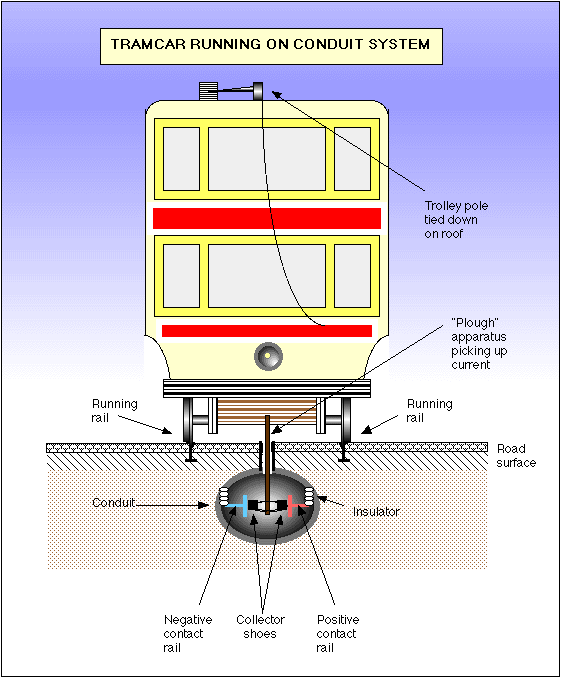
The tramways of central London were supplied with power through an underground conduit. Similar systems had also been tried in other major European cities but soon lost favour.

A current collector, called a 'plough' hung down from underneath the tram into a slot in the road into the interior of a metal pipe or 'conduit' which contained two live rails. Metal shoes on the sides of the plough were sprung outwards to slide along these rails and pick up the current needed to operate the tram.
It was a very expensive system to install and operate but was viable in central London because of the large number of passengers carried. Even so, it was not used in the suburbs and changeover points between plough and trolley pole operation were provided on the routes out of London.
In Bath, conduit operation would be uneconomic and impossible to install because of the large number of under-road cellars which it would intercept. The shallowest conduit system was on a river bridge in Paris; it was very difficult to install and keep operational, but even this would need too much road depth for some parts of Bath.